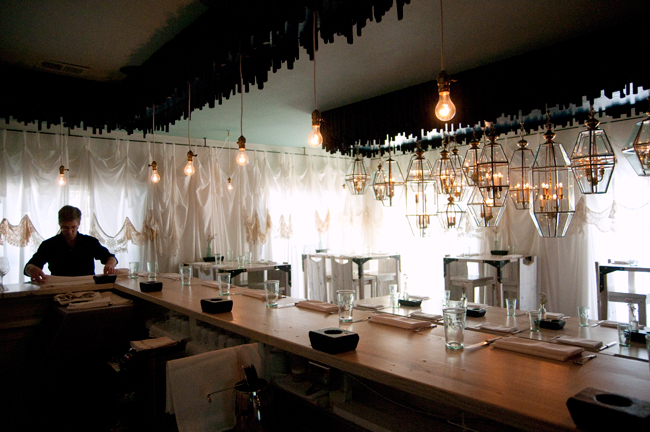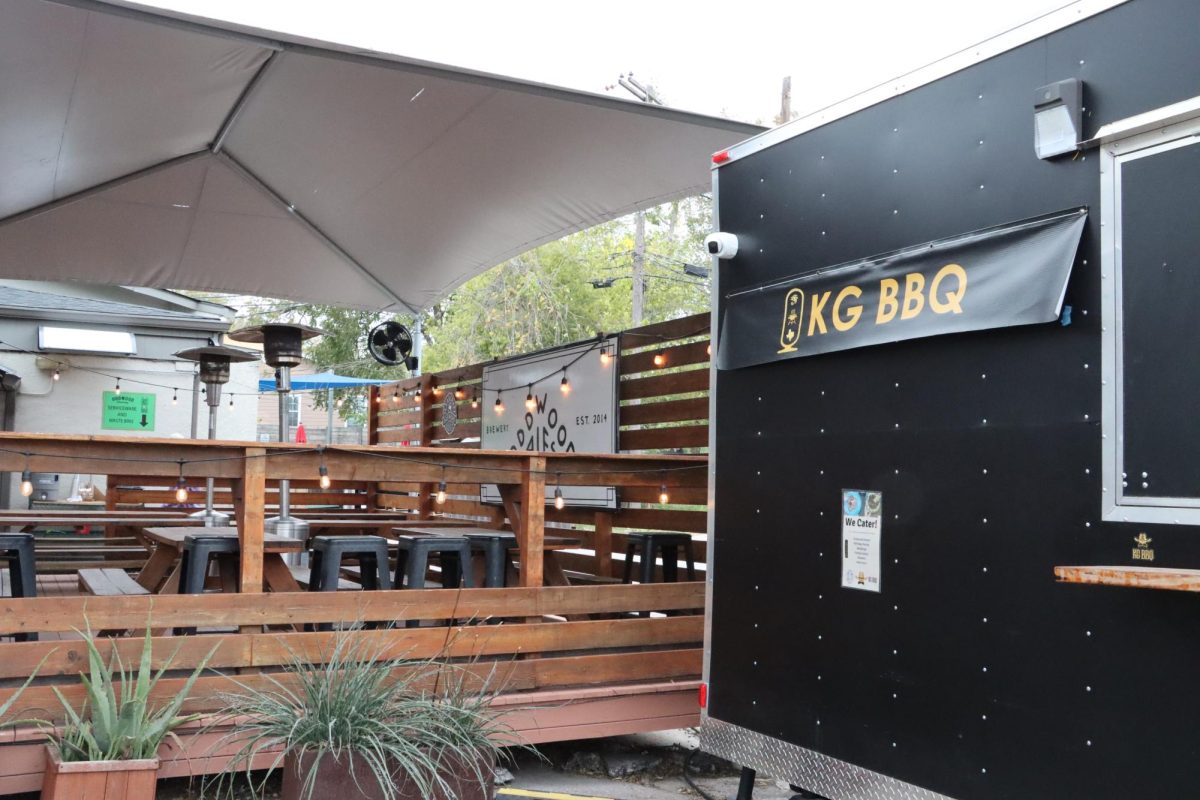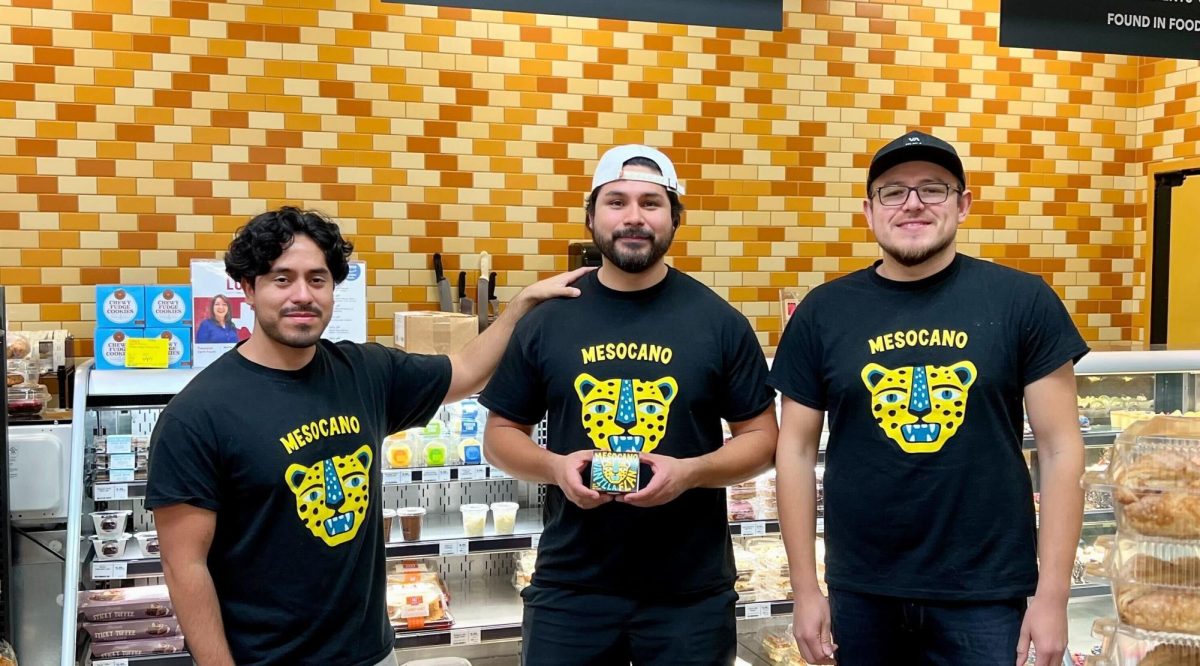
Started by husband and wife team Jessica Maher and Todd Duplechan, Lenoir opened its doors in mid-January in a tiny building tucked away on South First Street. Named for a black Spanish grape that grows wild in Texas, Lenoir features locally sourced ingredients on its “prix-fixe” (fixed price) menu that changes constantly based on availability.
“We always knew we wanted to use what was grown and raised locally because it’s sustainable and things tend to taste better when they’re in season,” Maher said.
The courses themselves are what Maher refers to as “hot weather food.” They are prepared using French cooking techniques, but using ingredients that are not typically associated with the classic culinary tradition. Lenoir’s dishes feature heavy spices, chilies and aromatics. Butter and heavy cream are not used often, and when they are, they’re used sparingly in order to keep the food light.
The menu is arranged to allow diners to pick and choose three courses from several different headings: Field, Sea, Land and Dream. Some of their current offerings include roasted quinoa with fried artichokes, snap peas and ginger; fish curry with toasted poha (dehusked and flattened rice), shaved asparagus and dill; venison in a spiced broth with turnips, sunflower sprouts and daikon (an East Asian radish); and for dessert, fiore sardo (an Italian hard cheese) with candied oranges, ras el hanout (a blend of Moroccan spices) and almonds.
“It was spicier than I had perhaps imagined but it had a lot of depth of flavor and it didn’t seem heavy,” said Susan Gayle, producer and host of the KOOP radio show “Food Love Austin,” of dining at Lenoir.
Tasting the food was a process.
“You taste with different parts of your senses all in the same dish. You get a spice, you get the different fruits and vegetables, and you know their source,” Gayle said.
Gayle’s response is in line with Maher’s vision for the menu at Lenoir.
“We’re really aiming for flavorful, interesting and delicious food, and we’re using predominantly local produce, meat and cheese to achieve that,” she said.
It would be impossible to talk about the food at Lenoir without mentioning its concise, but meticulously chosen, wine list. The list features a handful of wines chosen specifically to pair with individual dishes on the menu, enriching their flavors and uniting the various courses.
The wine list is broad and esoteric, featuring a little-known German Gruner as well as several trendier varieties like Albariño. One day, Maher hopes to have a wine made from eponymous Lenoir grapes to add to the wine list.
Like the menu itself, the dining experience is ephemeral, but much of it depends on who you’re sitting next to and whether or not they’re up for a casual conversation.
“We sat at the bar and we ended up chatting with the people sitting next to us,” Gayle said.
The restaurant’s space itself is worthy of discussion. Yelp reviewer Lorena O. summed it up in poetry: “Such pretty space/In which to dine with great friends/Fine details abound.”
The single-room interior is small and intimate, forcing diners into close proximity. The windows are draped with thin white curtains and bare bulbs hang from the ceiling over the bar for warm lighting. Much of the furniture was repurposed in an effort to achieve a shabby-chic, unfussy feel.
“We really wanted the restaurant to be a neighborhood stop,” Maher said.
Printed on Monday, March 5, 2012 as: Restaurant uses local food, creates diverse experience





















